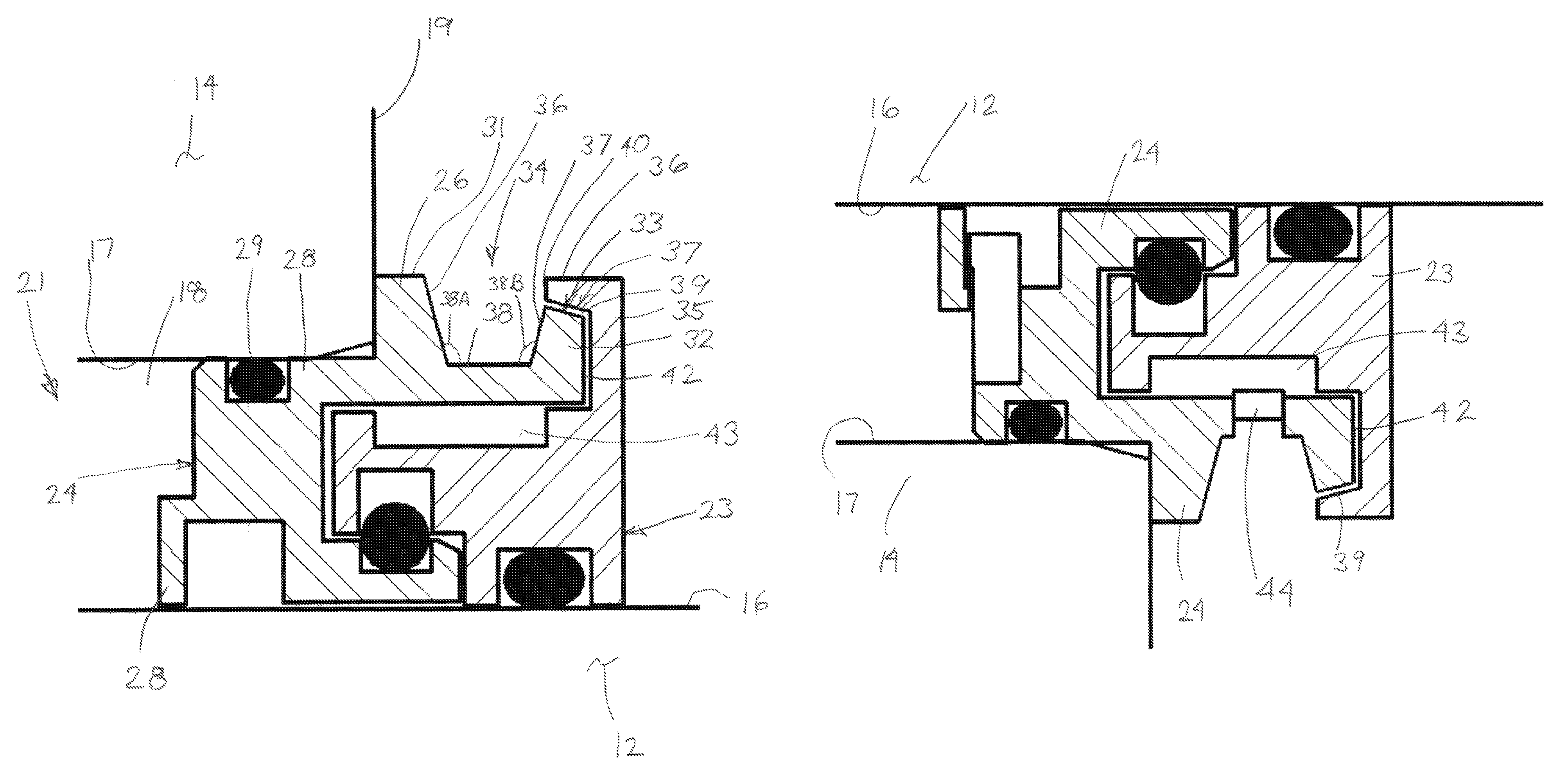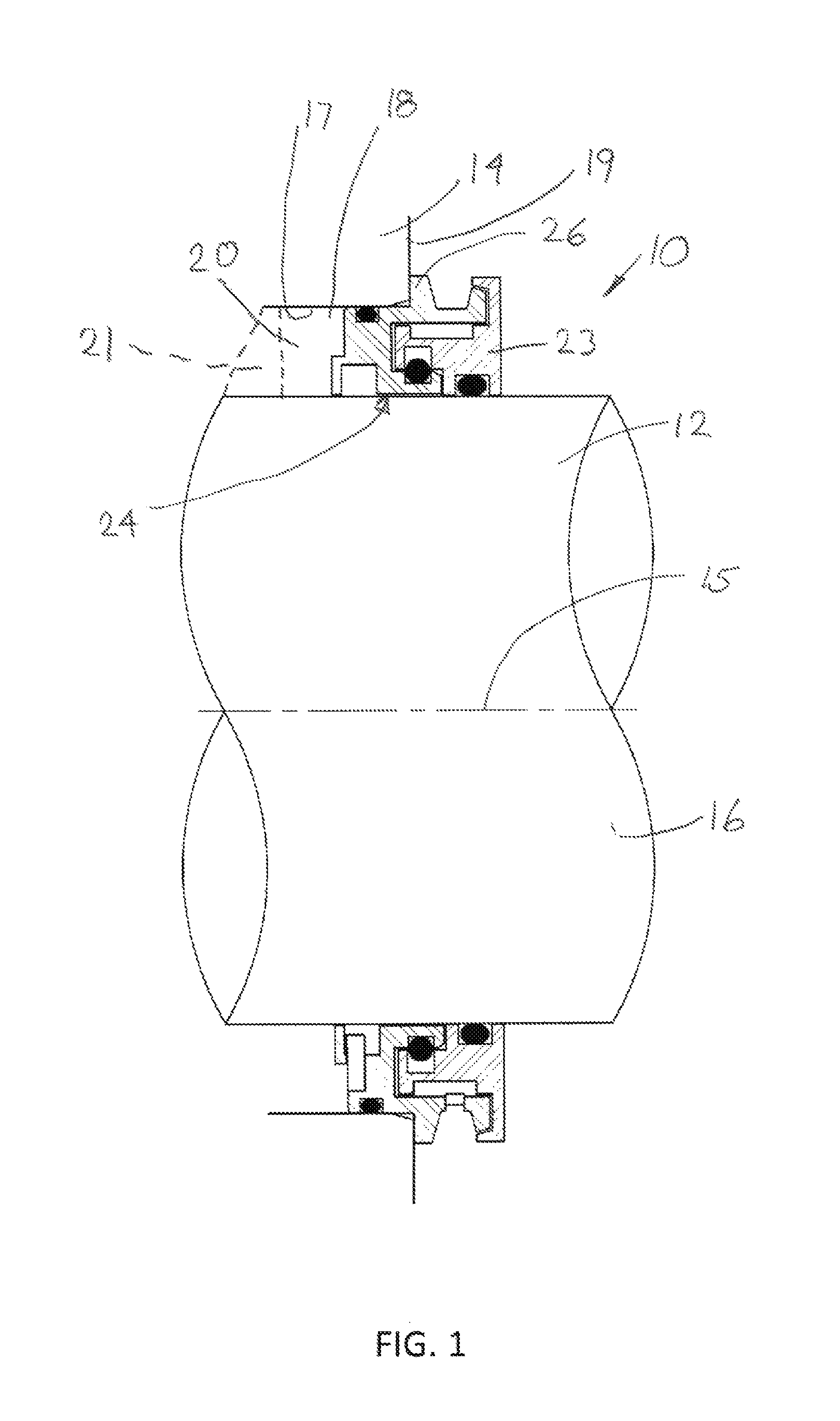Bearing isolator seal for rotating shaft
a technology of rotating shaft and isolator, which is applied in the direction of engine seals, dynamo-electric machines, supports/encloses/casings, etc., can solve the problems of reducing the performance of bearings, damage to bearings, etc., and achieves the effect of enhancing the centrifugal effect, reducing the amount of spray, and increasing the rotational effect of exclusion
- Summary
- Abstract
- Description
- Claims
- Application Information
AI Technical Summary
Benefits of technology
Problems solved by technology
Method used
Image
Examples
Embodiment Construction
[0024]Referring to FIG. 1, a bearing isolator seal 10 of the present invention is shown mounted to an equipment shaft 12 and an equipment housing 14.
[0025]The shaft 12 rotates about a shaft axis 15 and has an annular, outer shaft surface 16 which faces radially outwardly. The equipment housing 14 has an inward facing passage surface 17 disposed in opposing, radially spaced relation from the shaft surface 16, wherein the passage surface 17 defines a passage 18 through which the shaft 12 extends axially. The passage 18 opens axially from a housing end face 19, and essentially defines a bearing cavity or chamber 20 in which a bearing unit 21 is installed. The bearing unit 21 may be any type of bearing suitable to rotatably support the shaft 12 with examples being listed above.
[0026]Generally, the bearing isolator assembly 10 includes a shaft-mounted rotor 23 and housing-mounted stator 24 which are relatively rotatable relative to each other. As to the stator 24, the stator 24 stationar...
PUM
 Login to View More
Login to View More Abstract
Description
Claims
Application Information
 Login to View More
Login to View More - R&D
- Intellectual Property
- Life Sciences
- Materials
- Tech Scout
- Unparalleled Data Quality
- Higher Quality Content
- 60% Fewer Hallucinations
Browse by: Latest US Patents, China's latest patents, Technical Efficacy Thesaurus, Application Domain, Technology Topic, Popular Technical Reports.
© 2025 PatSnap. All rights reserved.Legal|Privacy policy|Modern Slavery Act Transparency Statement|Sitemap|About US| Contact US: help@patsnap.com



